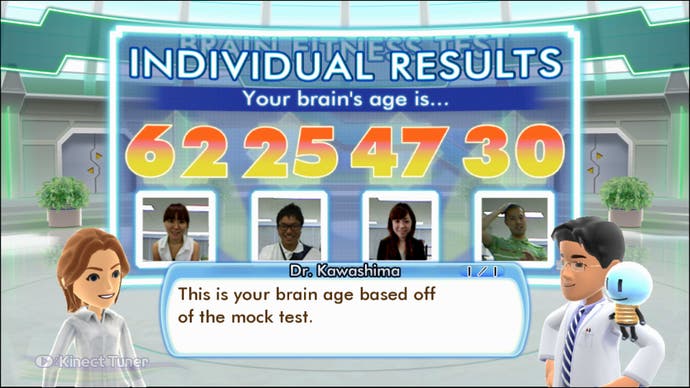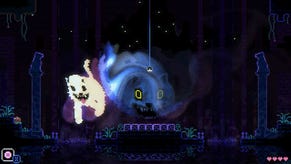Prof. Kawashima's Body and Brain Exercises
Fit or miss?
An extra Kinect game is lining up for the Japanese launch alongside Sports, Dance Masters and Sonic Free Riders on 20th November. It's a new Brain Age game from Namco Bandai. This strikes me as an unlikely pairing. Kawashima's Brain Training is Japan's most popular DS brand; what's this new iteration doing launching with a new peripheral for (and there's no denying it) Japan's least popular console?
That's not to say it's a bad idea. Basic movement-based puzzles are perfectly suited to Kinect technology. Prof. Kawashima's Body and Brain Exercises doesn't require a lot of precision and it doesn't force you into uncomfortably exaggerated motions. It's easy and fun to play, and none of the exercises take more than a few seconds to familiarise yourself with.
At the Tokyo Game Show, producer Yasuhiro Nishimoto is demonstrating a representative selection of brain-improving mini-games. These come in five flavours: Math(s), Reflexes, Logic, Memory and Physical.
In true brain-training tradition, they're light on the actual thinking but demanding of your memory and reaction times. None of the calculations involved in the maths games are actually difficult, but you have to recognise the answers quickly.
"It was a collaborative effort with Dr Kawashima," says Nishimoto of the game's development process. "Most of the time the development team would come come up with the ideas for the exercises and bring them to Dr Kawashima – he would review them, offer feedback, sometimes he would suggest changing it in a certain way or adding in an element. They would work together as a team."
The first game on show is Math Jock, in which a simple sum appears at the top of the screen above my avatarised self as I stand in front of a set of goalposts. There's a football to my left and one to my right, and I have to kick the one with the right answer on it – or, if they're both wrong, kick neither. The lag is noticeably less of a problem than in any other Kinect game I've yet played. Nishimoto explains that the exercises have been specifically designed to minimise it.

The next exercise sees me sorting chunky, brightly-coloured toy trucks with my arms, raising or lowering them as ramps to guide the vehicles into the right door at the other end of the screen. Again, the lag isn't a problem – the grinning avatar in the middle of the screen responds immediately to my arm movements. A third exercise has me moving my arms around to pop balloons in order from smallest to largest.
"One thing that we wanted to be careful about when making the game was monitoring the movement involved – we didn't want to make it too exaggerated or too tiring for players," says Nishimoto.
"We wanted there to be the right amount of movement so that older players who perhaps don't have as much energy can still enjoy the game and get involved. Besides, specially in Japan, because it's so crowded, we can't have a game makes everyone in adjacent apartments shout at you because you're being too loud."
After a few exercises, an avatarised Dr Kawashima appears to pass judgement on your performance and give you your Brain Age, which can then be tracked on a graph that stores up to six months of play data.









